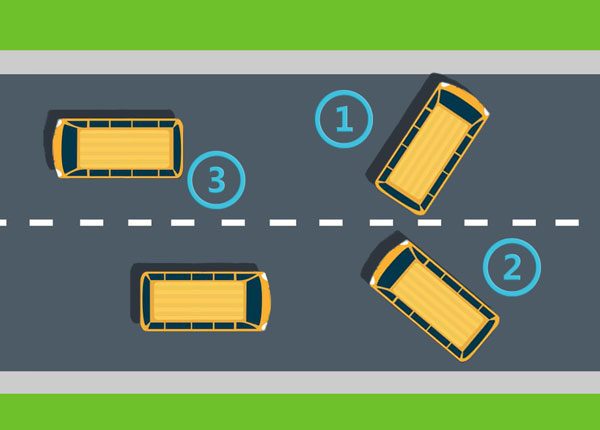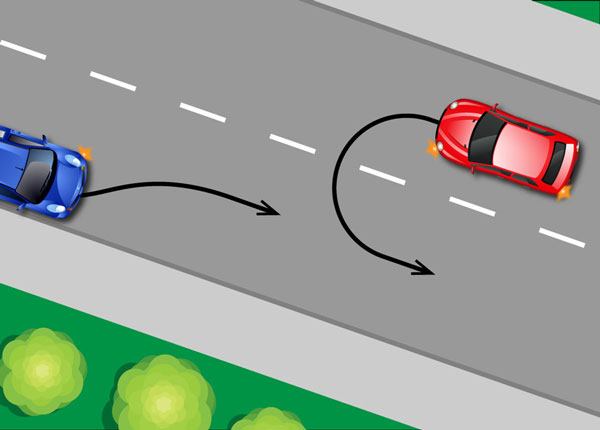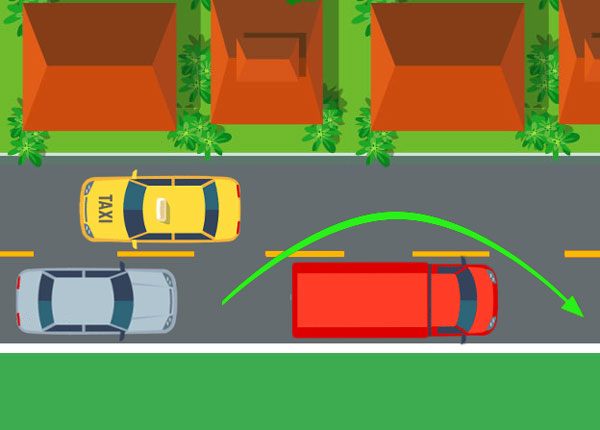
Making a Three-Point Turn Step-by-Step: Y-Turn and K-Turn Tips
Updated Sept. 30, 2019Three-point turns are more complex than two-point turns and U-turns. You must know how to execute a safe three-point turn, as they are a standard point of assessment on practical driving tests state-wide. If you need to reverse your direction of travel on a street that is too narrow for a U-turn and has no driveways to allow a two-point turn, making a three-point turn will be your only option.
Our step-by-step instructions will help you understand how three-point turns work and how they must be executed. We have also included detailed diagrams to make sure you can visualize each stage of the maneuver effectively.
Your state driving manual will also contain guidance on three-point turns. Note that these turns are sometimes referred to as Y-turns and K-turns. While practicing this maneuver, you must keep in mind that touching the curb during a three-point turn will likely amount to a fail on the driving exam.
Three-point turn step-by-step
Safely and successfully completing a Y-turn is largely a matter of choosing the right spot. You must be able to see well in both directions; some state handbooks specify a visibility-distance of 500 feet. Whether this is provided in your driving manual or not, 500 feet is a good distance to aim for. You must also be at least 200 feet from the nearest intersection. Do not attempt a three-point turn in heavy traffic.
Once you have chosen a good place to complete your three-point turn, follow this step-by-step guide:
-
1

Stop your vehicleas near to the right side of the road as possible. Activate your left turn signal.
-
2

Check for traffic in both directions. You will need roughly 20 seconds to complete the Y-turn. Conduct your check using mirrors AND turning to view blind spots.
-
3

When it is safe to begin the maneuver, pull forward slowly while turning the steering wheel all the way to the left.
-
4

Without allowing your wheels to touch the curb, pull as close to it as possible and straighten your wheels at the last moment, by steering to the right.
-
5

Activate your right turn indicator and shift the vehicle into “reverse”. At this point you must conduct another check around the vehicle, looking for traffic approaching from both directions.
-
6

Start to reverse slowly, while immediately turning the wheel hard to the right. As above, straighten your wheels and stop just before you connect with the curb. Make sure you do not touch the curb.
-
7

Having stopped, shift the vehicle into “drive” and once again check for oncoming traffic.
-
8

Complete the turn by driving forward into the correct lane when the way is clear.Accelerateto an appropriate speed.
 Using the three-point turn technique you can turn the car around in narrow spaces, where making a regular U-turn is not an option.
Using the three-point turn technique you can turn the car around in narrow spaces, where making a regular U-turn is not an option.Illegal Y-Turn
Drivers must NEVER attempt to make a three-point turn in the following situations:
- At or close to the top of a hill.
- On a curved stretch of road.
- On interstate freeways.
- Where they cannot clearly see for 500 feet in both directions.
Keep in mind that these are general restrictions regarding three-point turns. As making a Y-turn under any of these conditions would be hazardous, it is likely to be illegal in your state. However, other state-specific restrictions may apply in addition to those discussed here. Make sure you read about Y-turns in your state driving manual before attempting them on the road.




